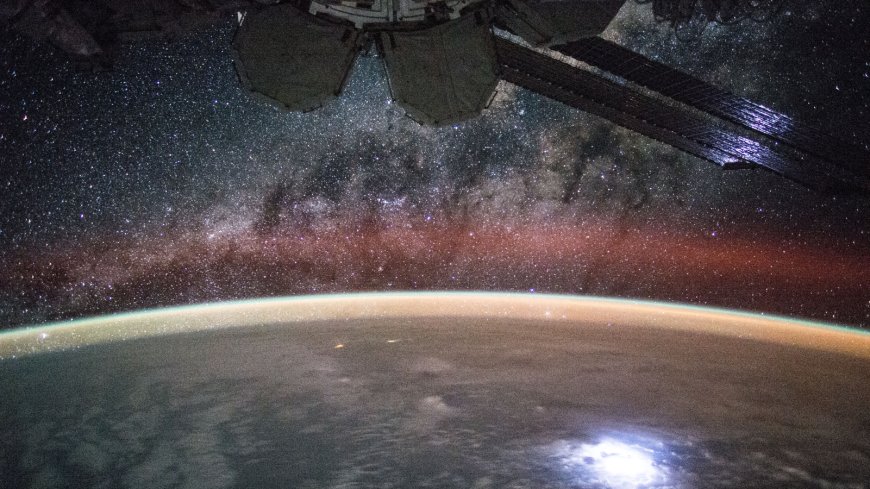New Method Developed to Detect Hidden 'Plasma Bubbles' in Earth's Upper Atmosphere
Scientists in China have found a new way to spot massive 'plasma bubbles' in Earth's upper atmosphere, known as equatorial plasma bubbles (EPBs). These invisible disturbances can disrupt GPS and radio signals, posing potential risks. By monitoring airglow with a machine learning program, researchers were able to accurately detect and measure the bubbles 88% of the time.

Scientists have developed a way of spotting 'equatorial plasma bubbles' using a machine learning program that detects changes in airglow shimmering over Earth.
Scientists in China have developed a new way of spotting massive, invisible 'plasma bubbles' lurking in Earth's upper atmosphere. The natural disturbances can disrupt GPS software and interfere with radio signals, but are incredibly hard to track.
The bubbles, known as equatorial plasma bubbles (EPBs), are found in the ionosphere — the region of the atmosphere over 30 miles (50 kilometers) above Earth's surface, where most of the gas has been ionized, or stripped of electrons, by solar radiation, transforming it into a sea of plasma.
The bubbles are cavities within the ionosphere, similar to the holes within blocks of Swiss cheese. They form shortly after sunset, when the lack of sunlight causes a sudden halt in ionization, but they only appear close to the planet's magnetic equator, which is askew from the geographical equator.
EPBs can grow to be anywhere from 6 to 60 miles (10 to 100 km) across. But as the plasma cavities are invisible to the naked eye, they have proved to be very hard to measure and accurately track in real time.
But it's important to know where they are because they can disrupt GPS positioning software and interfere with radio signals that are bounced off the ionosphere over long distances, making them potentially dangerous in certain circumstances.
In a new study, scientists from China's National Space Science Center and the University of Beijing developed a new way of spotting EPBs by monitoring airglow. These shimmering aurora-like lights appear when plasma within the upper ionosphere cools overnight and recombines into gases, emitting energy in the form of light.
The team realized that EPBs slightly alter the appearance of the airglow that forms above them. The researchers then trained a machine-learning program, using over 10 years' worth of airglow photography captured by the All-Sky Imager at Qujing Station in southern China, to search for the signs of airglow deformation. Their best model could accurately detect and measure the bubbles 88% of the time.
The researchers hope that their findings could help to prevent several issues surrounding EPBs. One potential issue is how the bubbles can interfere with GPS signals from satellites, potentially leading to errors in locational software. EPBs can also disrupt radio signals by altering how they bounce off the ionosphere, which can be problematic in emergency scenarios.
The new findings could be used to create an early warning system for GPS and radio operators, enabling them to factor the disruptive cavities into their models and forecasts and avoid any potential worst-case scenarios.
According to the source: Live Science.
What's Your Reaction?
 Like
0
Like
0
 Dislike
0
Dislike
0
 Love
0
Love
0
 Funny
0
Funny
0
 Angry
0
Angry
0
 Sad
0
Sad
0
 Wow
0
Wow
0


















































































































































